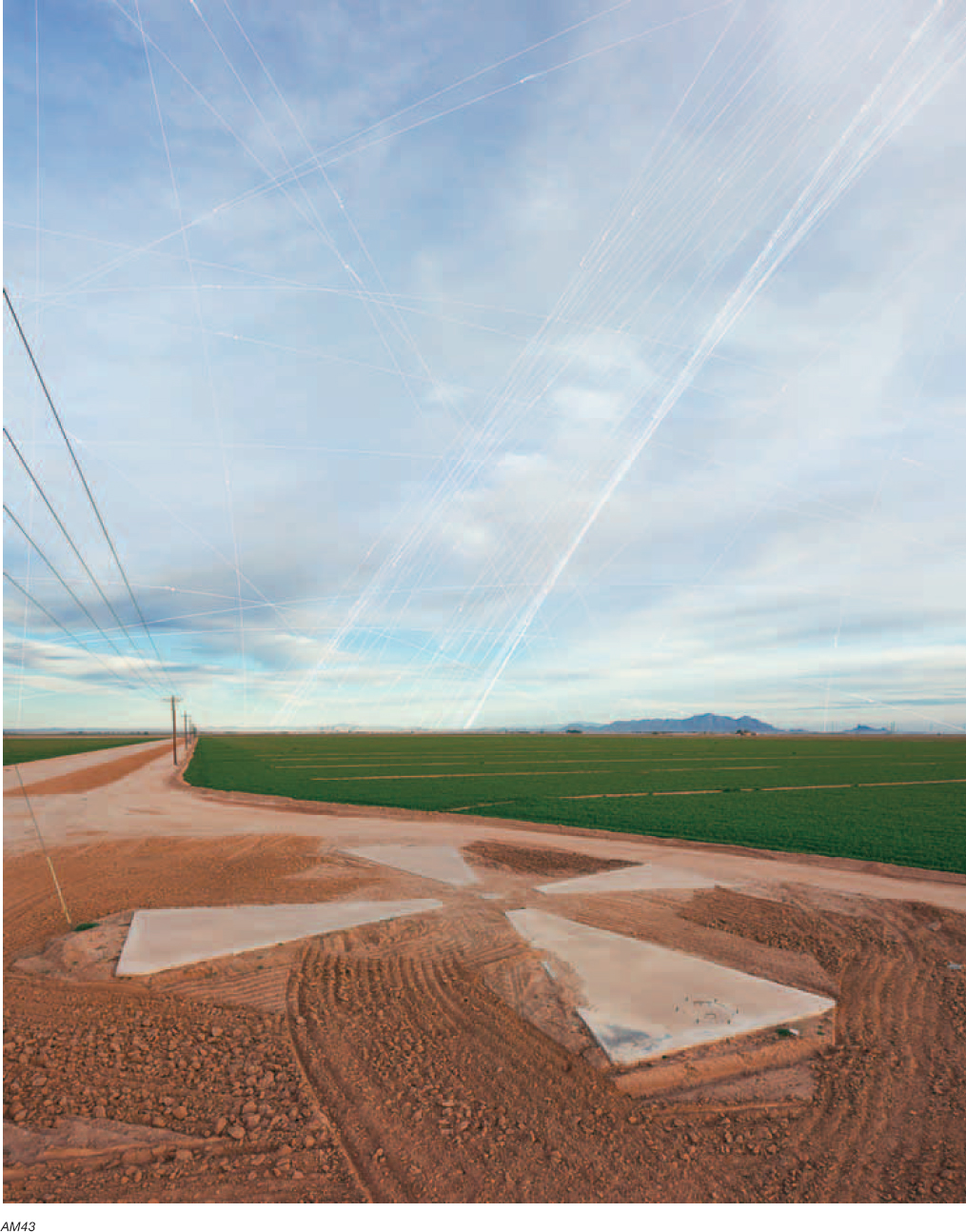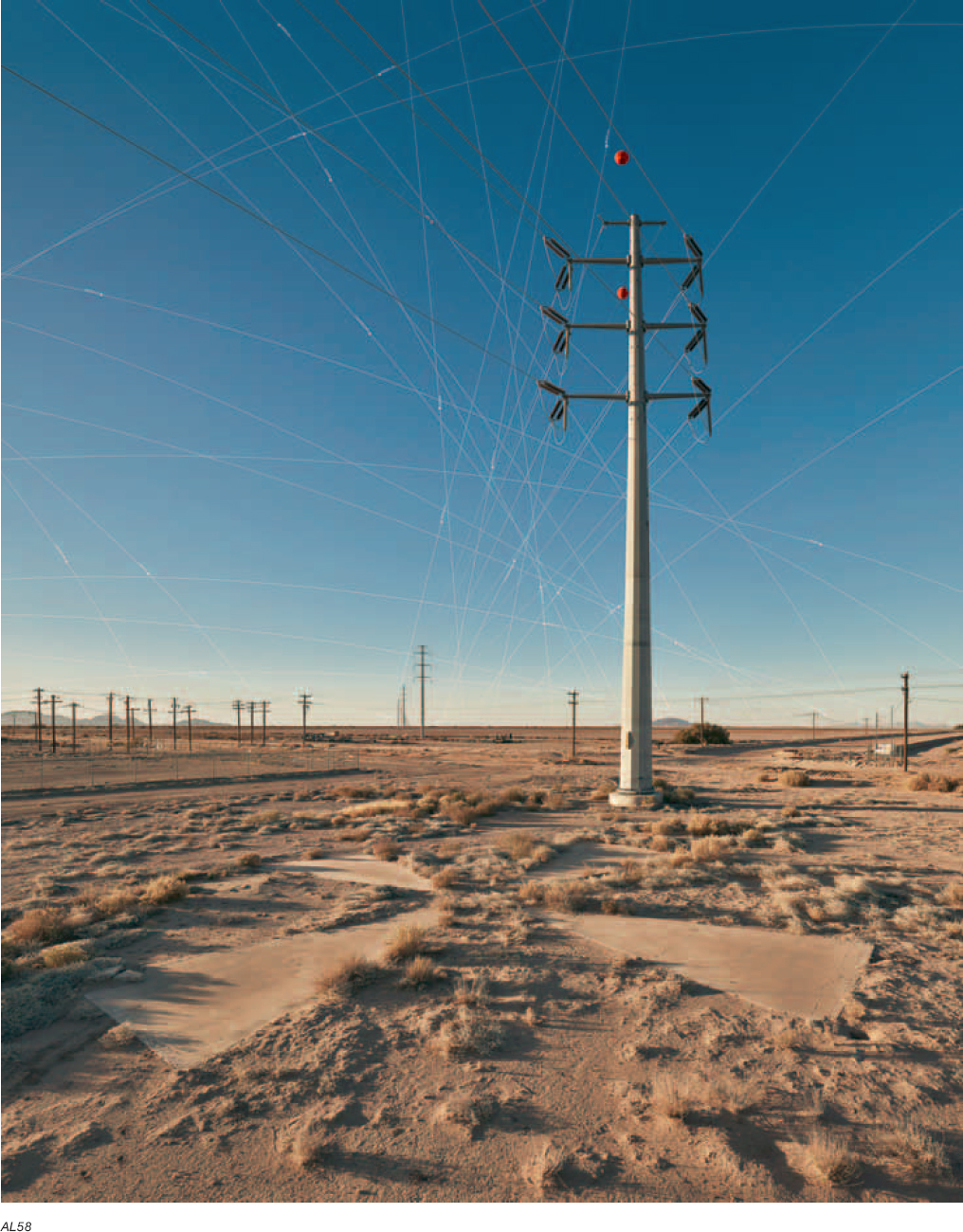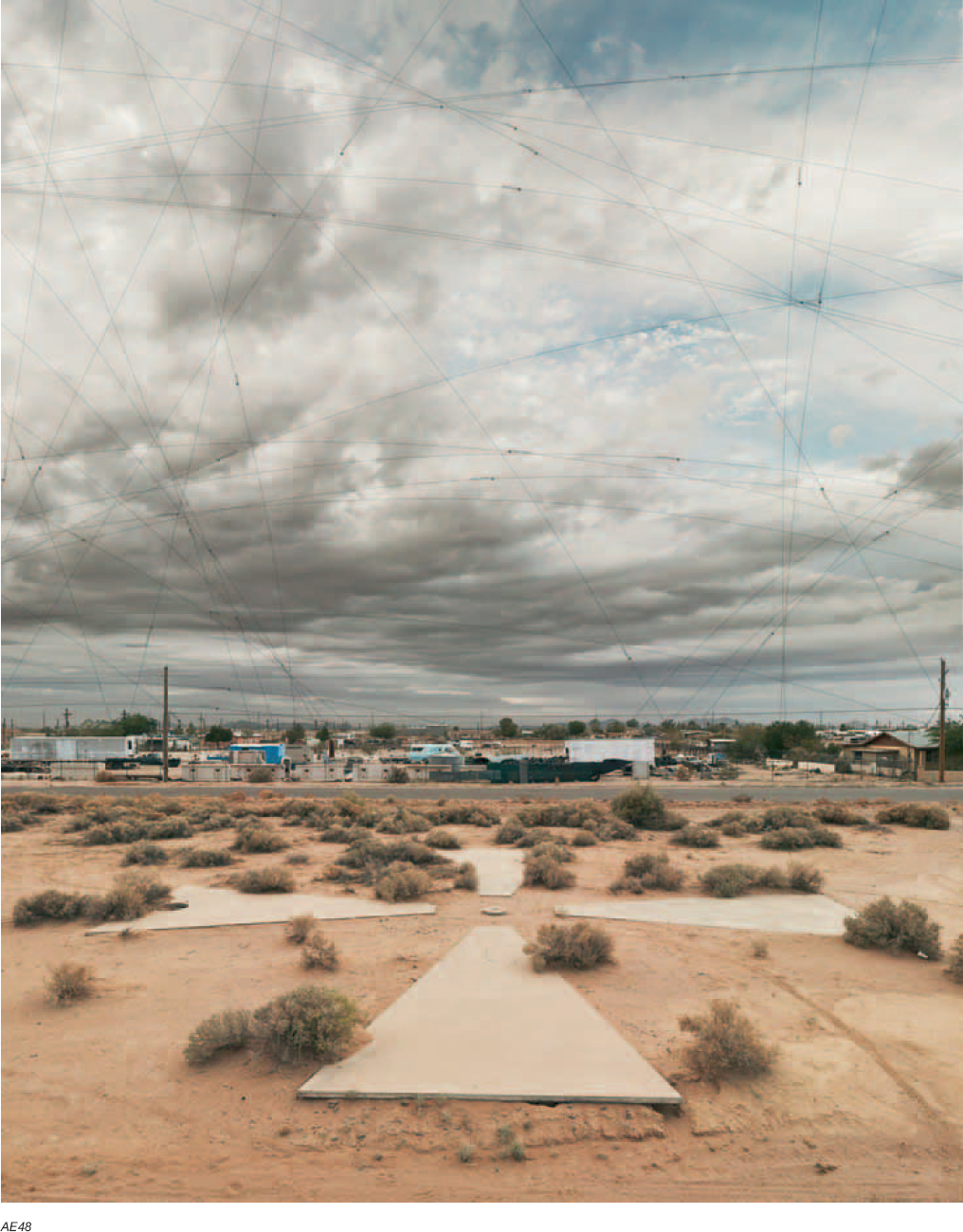Doubling Down
By William L. Fox
Director, Center for Art + Environment, Nevada Museum of Art, Reno
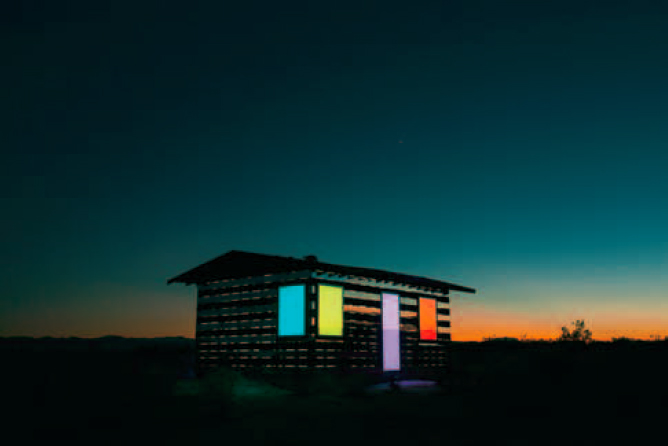
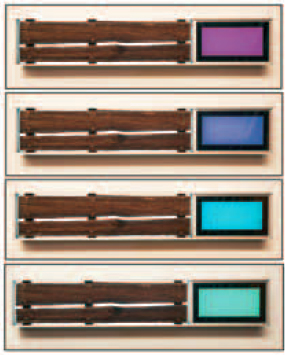
Lucid Stead Elements #1, 2017
Brushed anodized aluminum, glass, acrylic, wood, Lucid Stead original siding, LED lighting, electrical components, Lucid Stead color program
47 x 87.5 x 6 inches
Collection of Rodney D. Lubeznik and Susan D. Goodman
This sculpture is composed of the Lucid Stead installation’s raw elements contained within a crisp aluminum frame. Its color scheme is inspired by the color-changing light projected onto Lucid Stead at night.
According to published surveys, you look in a mirror between 8 and 26 times a day. If you are a male and you shave, you spend 16.5 minutes on average in front of a mirror while shaving; if a woman, you may spend an average of 14.5 minutes applying makeup and adjusting your personal appearance in its presence. Artificial mirrors have been with us for at least 8,000 years, glass ones with metal backing for more than 2,000 years. Mirrors reverse the forward-to-backward axis, which is why we think they reverse left to right. No matter, we are so adept at the mirror effect that we manage not to slit accidentally one’s throat while shaving, or to put out an eye while applying eye shadow.
We picture mirrors in paintings and photographs, and clad entire skyscrapers in them, sometimes inadvertently cooking adjacent buildings as a result. We deploy them in periscopes and lasers, but also in optometrists’ and dentists’ offices, and carnival funhouses. Virtually every vehicle hosts at least one. As a result, it’s difficult to surprise us with a mirror, but the slender and elusive Invisible Barn by the architect studio stpmj that sits in a forest in the northern Sierra, and Doug Aitken’s full-size Mirage ranch house in the Swiss Alps above Gstaad are examples of contemporary artists putting mirrors on structures in hopes of helping encounter reality in unexpected ways.
Phillip K. Smith III’s temporary installation Lucid Stead is the most interesting of these interventions by several virtues. Smith was born and raised in the Mojave Desert, returning to his home terrain to practice architecture and make
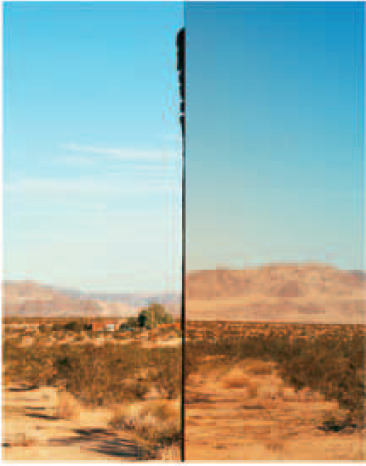
Lucid Stead: Focused Views Phillip K. Smith III took a series of photographs in 2013 prior to closing the Lucid Stead installation.
The photographs are detailed and cropped views of the homestead shack, drawing attention to the relationship between the weatherworn wood, reflection, and the environment. The day after Smith took these photographs, he decommissioned the work by returning the cabin to its original state with one exception: He did not reattach the original wood siding he had removed, but rather kept it catalogued in his studio. These woods slats would become the originators of the Lucid Stead Elements sculptures, one of which was also featured in the exhibition at the National Academy of Sciences.
art after earning BFA degrees at the Rhode Island School of Design. His early sculptures and installations used architecture as their inspiration, sometimes incorporating mirrors and lights with stacks of interleaved material, but Lucid Stead adopted an actual building for its armature. Using an abandoned “jackrabbit homestead” cabin (the name comes from the American desert hares that inhabit the land), Smith profoundly destabilized what you thought of a mirror.
One of the last homestead movements in America, the Bureau of Land Management’s Small Tract Act of 1938 provided people with up to five acres in the Mojave’s Morongo Basin for only a few dollars if you improved the property (most often by building a cabin of at least 400 square feet) within three years. It was an attempt to monetize what the government considered useless land, but veterans returning from WWII spurred a land rush and as late as 2004, 2,000 of these simple structures remained. Many were one-room bilateral tripartite cabins—four walls and a roof fronted by a door with a window on each side. It’s the most common face of a domicile in American architecture.
Smith wrapped mirrored bands around the house that alternated with the original slats of wood siding. The effect in the highly isotropic environment of the Mojave—where everything looks much the same in all directions—was that you thought you were looking through the house. It was difficult to remember that you were looking in a mirror, a bit as if the Invisible Man had taken off alternating strips of bandages and revealed not what was behind him, but behind you. The effect produced an affect that left you betwixt and between. The mirrored structures by stpmj and Aitken retained their visual integrity, despite open windows and doors through which you could see the landscape on the other side of the house. But the gestalt of Mirage as a house was so compromised by alternation of mirrored and un-mirrored planks that you had to concentrate to reassemble its condition as a house. You lost track of time, could literally get dizzy while performing this reverse prestidigitation, and in short experienced what you least needed in an isotropic space: disorientation. On the other hand, it was safer and more interesting than doing drugs.
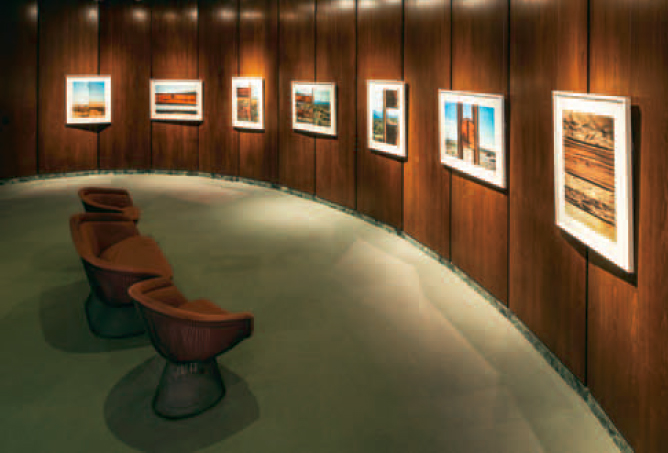
The exhibition From Lucid Stead: Prints and Works by Phillip K. Smith III was on display from March 18 through September 13, 2019, at the National Academy of Sciences’ Upstairs Gallery.
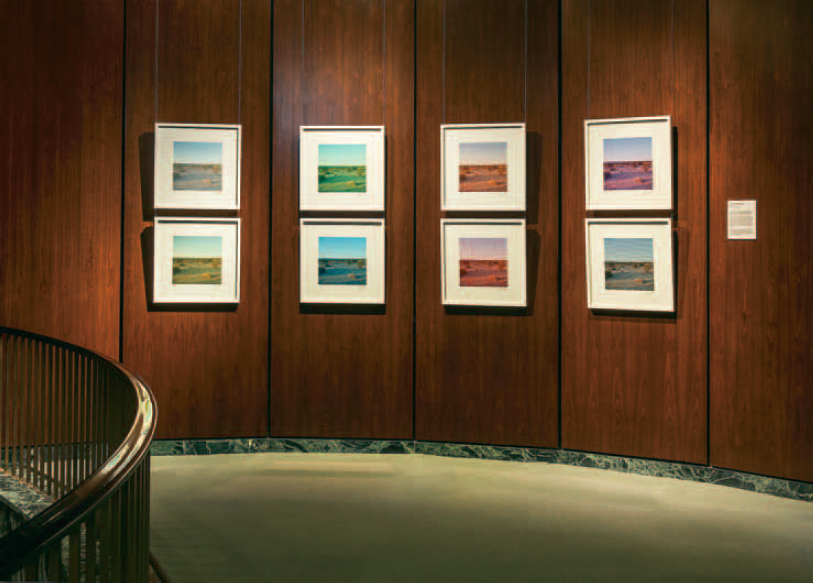
Additionally, Smith took an historical building as his armature, which meant you found yourself moving back and forth in time, between the old weathered boards and the slick mirrored bands, between the Old West and the Post-Rural, between homesteading and art-going. The effect at night was, if not as disorienting, even more complicated. Smith used LEDs to turn the windows and doors into solid panels of blue, red, yellow, green, orange, or purple that slowly rotated through the palette. In between the boards and bands of mirrors white light leaked out, making visible the diagonal two-by-fours inside and holding up the walls. What by day looked like slices of a house hovering improbably over the desert by night became something both more solid but oddly eerie.
Smith’s work has been compared to that of the earlier masters of the Light and Space movement in Southern California during the 1960s and early ‘70s, artists such as James Turrell, Robert Irwin, and Larry Bell. The linkage is apt, their spare geometries and use of both natural and projected light tinkering with the permeable boundaries of cognition and reality. Manipulating materials to make the world at once strange and beautiful so that we can perceive more of it is the useful task of an artist. Rearranging what we think a mirror does in the Mojave—an environment so alien to us that we stage science fiction movies on it because there is no objective correlative to contradict the imagination—is to double down on the question of sight itself. If we think that what we see is what we believe, then Phil Smith has given us every chance to question that assumption.
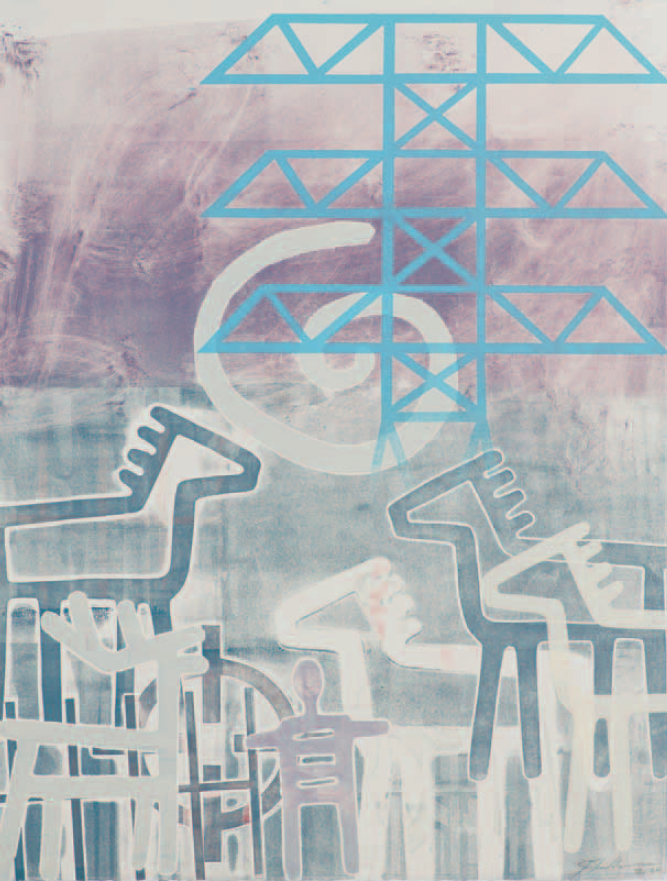
Inhabited Landscapes 8, 2020
Monoprint on paper
19.5 x 25.75 inches
Standing on a Cloud, 2018
Monoprint with spray paint, relief, collage, acrylic, graphite
24 x 18 inches
In his 40-year artistic career, Joe Feddersen has worked in painting, basketry, glass sculpture, photography, and computer-generated imagery. He is a member of the Confederated Tribes of the Colville Reservation. Feddersen says his artwork is grounded in tradition but reflective of the present. Using a variety of traditional artforms and media, his work both celebrates his culture and speaks to a Plateau-Native perspective of the world around us.
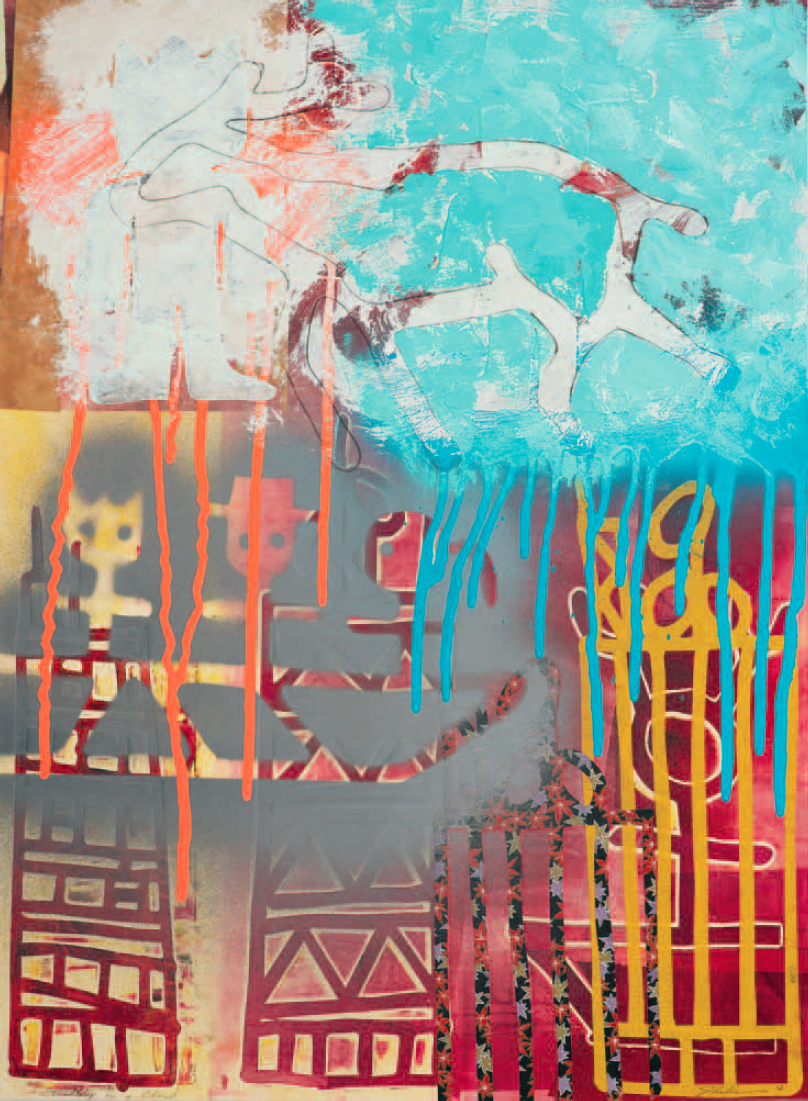
Calibration Markers AM43, AL58, AE48 with Satellites, 2015
Archival inkjet prints
30 x 24 inches each
In this series of images of what remains of the Corona project, Julie Anand and Damon Sauer investigate our relationship to the vast networks of information that encircle the globe. The Corona project was a CIA and U.S. Air Force surveillance initiative that began in 1959 and ended in 1972. It involved using cameras on satellites to take aerial photographs of the Soviet Union and China. The cameras were calibrated with concrete targets on the ground that are 60 feet in diameter, which provided a reference for scale and ensured images were in focus. Approximately 273 of these concrete targets were placed on a 16-square-mile grid in the Arizona desert, spaced a mile apart. Long after Corona’s end and its declassification in 1995, around 180 targets remain, and Anand and Sauer have spent several years photographing them as part of an ongoing project. In their images, each concrete target is overpowered by an expansive sky, onto which the artists map the paths of orbiting satellites that were present at the moment the photograph was taken. For Anand and Sauer, “these markers of space have become markers of time, representing a poignant moment in geopolitical and technologic social history.”
